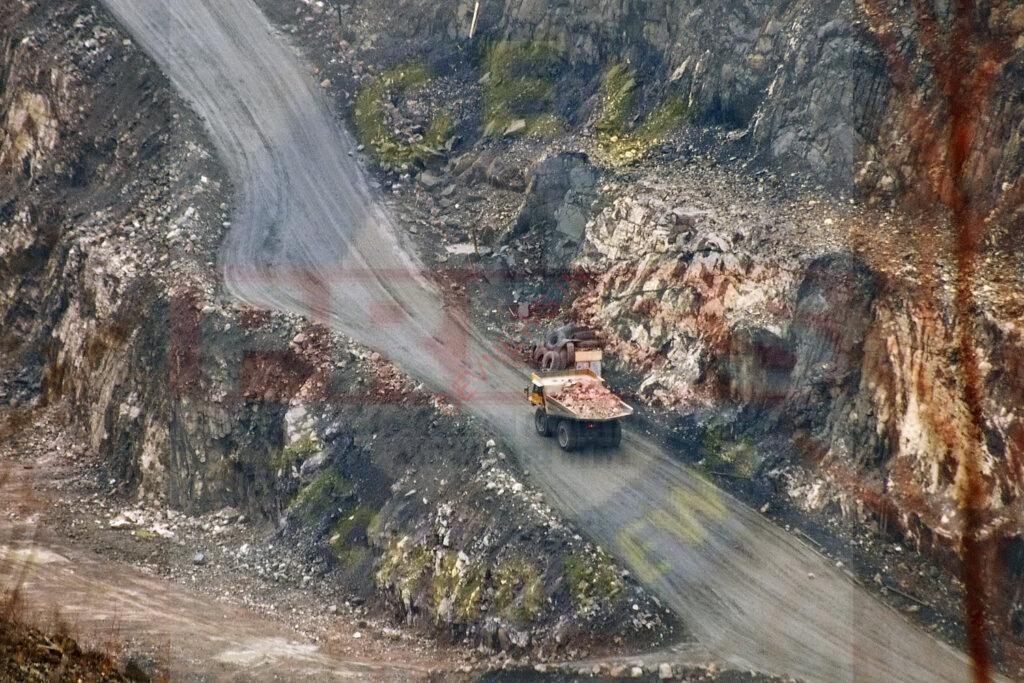MEANING OF SURFACE MINING AND ITS TYPES
Surface mining is a form of mining in which the soil and the rock covering the mineral deposits are removed. It is the other way of underground mining, in which the overlying rock is left behind, and the required mineral deposits are removed through shafts or tunnels.
There are two basic classes of mining: mining at the Earth’s surface and mining underground…Surface mining accounts for two thirds of the world’s solid minerals, and is predominantly used in obtaining sand, gravel, crushed stone, phosphates, coal, copper, iron and aluminum.
There are 5 main types of surface mining, which are used in various degrees and for different resources
1. Strip Mining
Strip mining gets its name from the fact that the process involves stripping the surface away from the mineral that’s being excavated (usually coal). Soil, rock, and vegetation over the mineral seam is removed with huge machines, including bucket-wheel excavators.
This type of mining makes sense when the mineral is near the surface. If the ore is too far under the surface, the process of strip mining becomes impractical and needlessly damaging to the terrain.
Two types of strip mining exist, depending on the amount of ore under the surface, and the surrounding terrain. They are:
- Area Strippingextracts ore over a large, flat terrain in long strips. The overburden of rocks and soil is dropped in the previous strip so that long gaps aren’t left in the earth after mining is complete.
- Contour miningis a version of strip mining that follows the contours of outcrops and hilly terrains. Usually, the mineral seam follows the contour of the outcrop, and the overburden is removed carefully along the seam in much smaller and custom shaped excavations rather than long strips.
2. Open-Pit Mining
Open-pit mining is similar to strip mining, except the ore is removed from an open pit which is not then filled in. Open-pit mining has been around for centuries, with ancient cultures like the Greeks, Romans, and Persians mining for granite, marble and even salt.
Open-pit mines are commonly called quarries when they produce materials used in building: limestone, granite, and marble, for example.
These pit mines continue to be enlarged until there is no more ore to mine or the overburden becomes too heavy. When it’s no longer economical to operate an open-pit mine, it’s commonly converted to a landfill or waste disposal site.
The pros of an open pit mine is that these mines usually produce a vast amount of ore without the costly process of removing overburden — the ore is often in a large area and close to the surface. However, a major con of these type of mines is that they are both dangerous to work in, and permanently alter the surrounding ecosystem.
3. High Wall Mining
High wall mining is a combination of surface mining techniques and sub-surface techniques.The basic idea is you start with an open-pit mine, and then drill or bore into those walls to extract more resources.High Wall mining is performed remotely by a person in a cabin at the surface who uses a television camera to monitor and control the continuous miner machine.
4. Dredging
Dredging is the more sophisticated version of panning for gold. In fact, it’s mostly associated with gold mining. Much like hopeful miners with their pans during the gold rush, floating dredges (a barge fitted with conveyor belts and scoops) move up a water table. A scoop lifts material up on a conveyor belt, and the mineral is removed on board the barge. The unwanted material is then dropped back into the water table using another conveyor belt.
5. Mountaintop Removal
Mountaintop Removal Mining is highly controversial, and best suited for retrieving mass amounts of minerals, usually coal, from mountain peaks. The process involves blasting the overburden with explosives above the mineral seam to be mined. The broken mountaintop is then shifted into valleys and fills below.
This type of mining is used when the ore to be retrieved is 400 feet or deeper. Controversy surrounds the permanent alteration of ecosystems and entire landscapes by removing mountaintops, however, advocates point out that after completion the mining process leaves a flat terrain where there wasn’t one when reclamation is complete.

